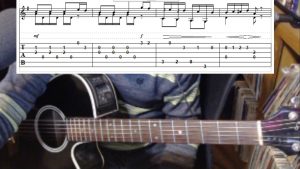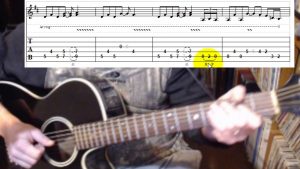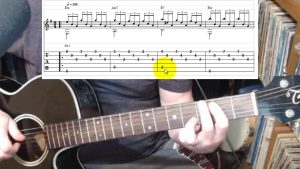About Fingerpicking Or Fingerstyle
Fingerpicking (also called thumb picking, alternating bass, or pattern picking) is a term that is used to describe both a playing style and a genre of music. It falls under the “fingerstyle” heading because it is plucked by the fingers, but it is generally used to play a specific type of folk, country-jazz, and/or blues music. In this technique, the thumb maintains a steady rhythm, usually playing “alternating bass” patterns on the lower three strings, while the index or index and middle fingers pick out melody and fill-in notes on the high strings.
The style originated in the late 1800s and early 1900s, as southern African American blues guitarists tried to imitate the popular ragtime piano music of the day, with the guitarist’s thumb functioning as the pianist’s left hand, and the other fingers functioning as the right hand. The first recorded examples were by players such as Blind Blake, Big Bill Broonzy, Memphis Minnie and Mississippi John Hurt. Some early blues players such as Blind Willie Johnson and Tampa Red added slide guitar techniques. Fingerpicking was soon taken up by country and Western artists such as Sam McGee, Ike Everly (father of The Everly Brothers), Merle Travis, and “Thumbs” Carlile. Later Chet Atkins further developed the style.
Most fingerpickers use acoustic guitars, but some, including Merle Travis, often played on hollow-body electrics.
Classical guitar fingerstyle
A wide range of musical styles can be played on the classical guitar. The major feature of the classical fingerstyle technique is that it has evolved to enable solo rendition of harmony and polyphonic music in much the same manner as the piano can. The thumb, index, middle and ring fingers are all employed for plucking. Chords are often plucked, with strums being reserved for emphasis. The classical guitar excels in such performance and allows a high degree of control over the musical dynamics, texture, volume, and timbral characteristics of the guitar. The repertoire is very varied in terms of keys, modes, rhythms, and cultural influences. Altered tunings are rarely employed, with the exception of Dropped D.




